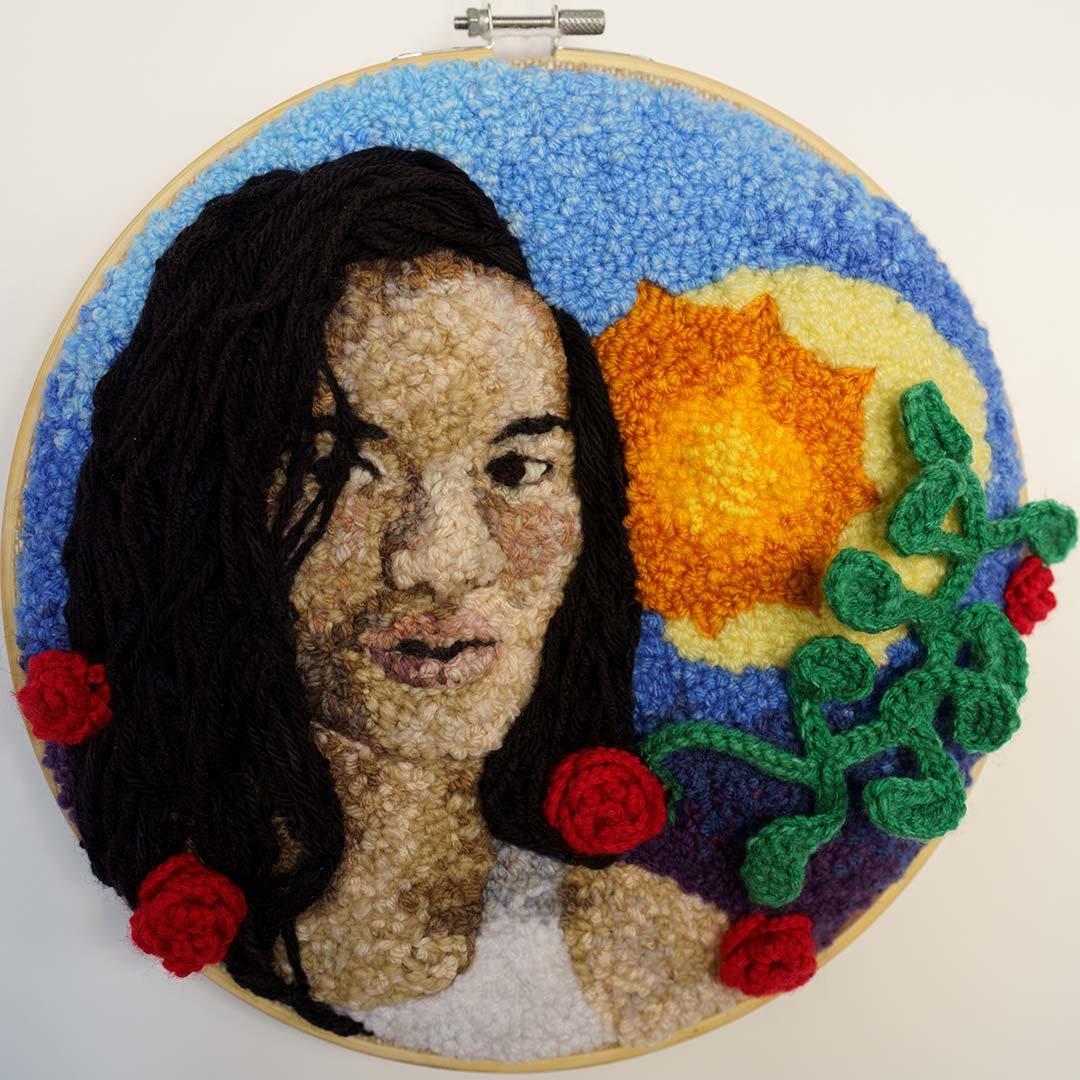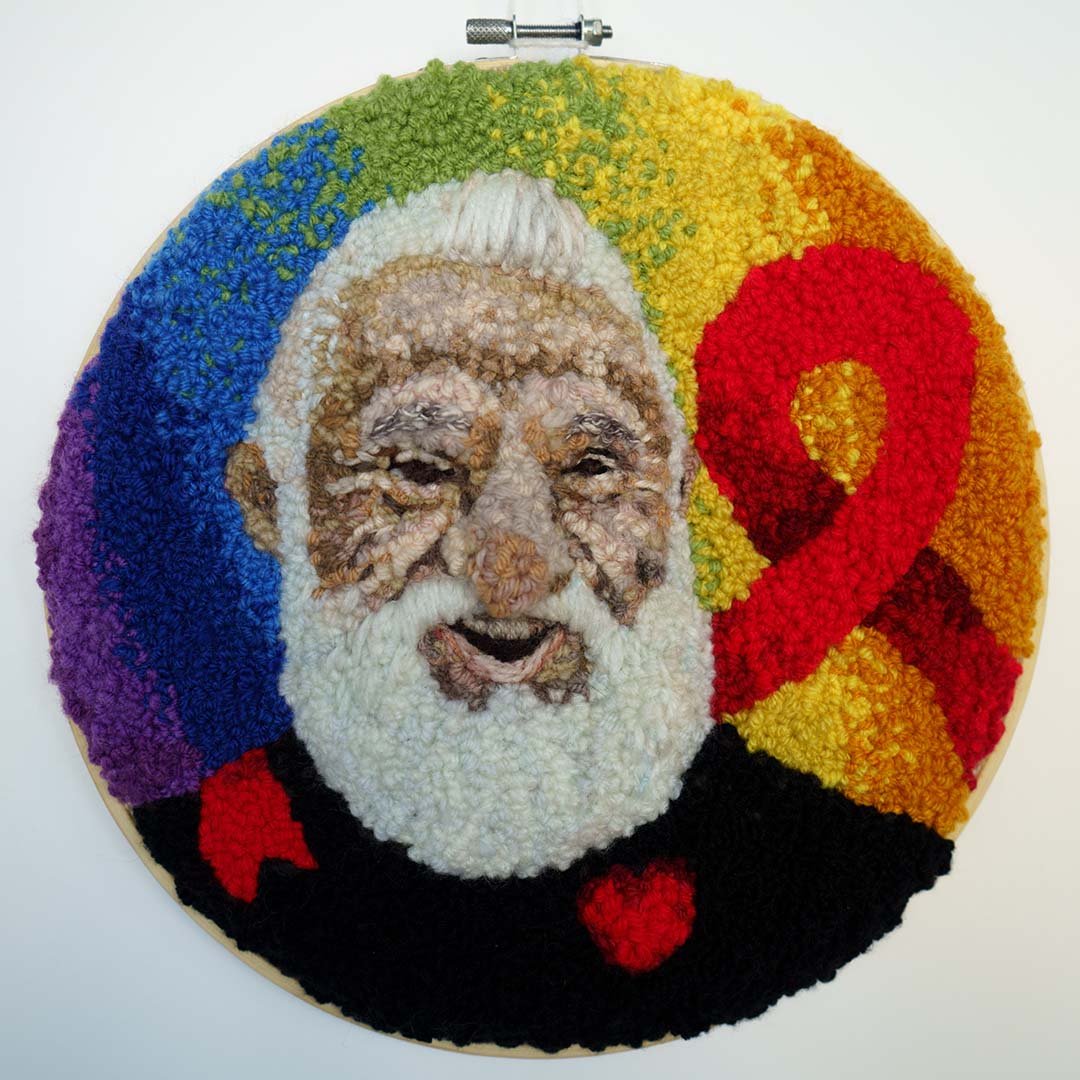Textile Portraits of Queer Visionaries



Using a mix of natural and synthetic fibers, I have created three textile portraits of queer visionaries – keynote speakers at CBRC’s Summit 2021 conference – whose ideas resonated with me.
Portraiture is a practice that allows the artist to immortalize their subject, as well as convey the artist’s emotion toward them. My medium of choice – loops of yarn embedded in cloth – resists perfection. Like a story that’s transmitted orally, the image that emerges from this intricate, iterative, mindful process is uniquely imprecise, and is as reflective of the narrator/artist – their skill, mindset, motivation/s, interests – as it is of the subject.
Connection to community has been a unifying theme across the keynote speeches – and I used symbolism to create connections between the individual works in this series.
I integrated all of the seven colours of the rainbow into each portrait, denoting the subjects’ ties to the queer community. For each individual, I also included symbols that are particular to the communities they belong to and that allude to the specific aspects of the keynote speeches. Francisco Ibáñez-Carrasco pointed out that narratives about HIV positive gay men’s lives focus primarily on their marginalization and suffering, at the expense of ignoring the role of pleasure and vitality in these men’s lives. I included a red ribbon for HIV activism, and a red heart on a black background to signify Carrasca’s affinity for leather culture.
I was deeply touched by Jack Saddleback inviting the conference attendees to contemplate what kind of ancestors they would like to be. His sharing of Indigenous teachings has reawakened my yearning to learn more about my roots, and reminded me of my commitment to healing the present and nurturing future generations. I placed an Indigenous Medicine Wheel to his left (close to his heart) and the viewer’s right (to those who read left to right, this placement signifies the future), and placed him in a natural setting, as a descendant of the original stewards of this land.
I have been a longtime fan of Kai Cheng Thom’s work, and appreciate her nuanced understanding of conflict, harm, and justice within communities. Her parable about community conflict that featured Sun and Moon deities served as the inspiration for the background of her portrait. The five red flowers symbolize the fragmented body parts of the Love Goddess, and the life that sprouted as a result of her death. The green vine represents growth and healing. The number five and the colour red are considered to be auspicious in Chinese culture – an homage to Thom’s ethnic and cultural background.
The slow, meticulous artistic process of crafting these symbolism-rich portraits allowed me to honour these individuals and their messages with deliberate attention, which is a precious commodity within the productivity culture. As an AFAB nonbinary person, I once avoided working with textiles, as I was misguidedly trying to distance myself from anything that could be perceived as feminine. However, as I become more secure in my identity, I am better able to embrace my expression in its wholeness, and reclaim the forms of expression I had once given up. I am no longer exiling parts of myself that do not fit others’ narratives of who I am.”
Katrissa Singer
Katrissa Singer is a nonbinary, queer, and neurodivergent multimedia artist based in Tkaronto. They’ve been engaging in a self-directed exploration of Oxford punch needle rug hooking since 2019, entranced by the mindful flow and the three dimensional possibilities of this medium.
“My worldview is enriched by listening to the voices of those whose lived experiences are different from mine.
